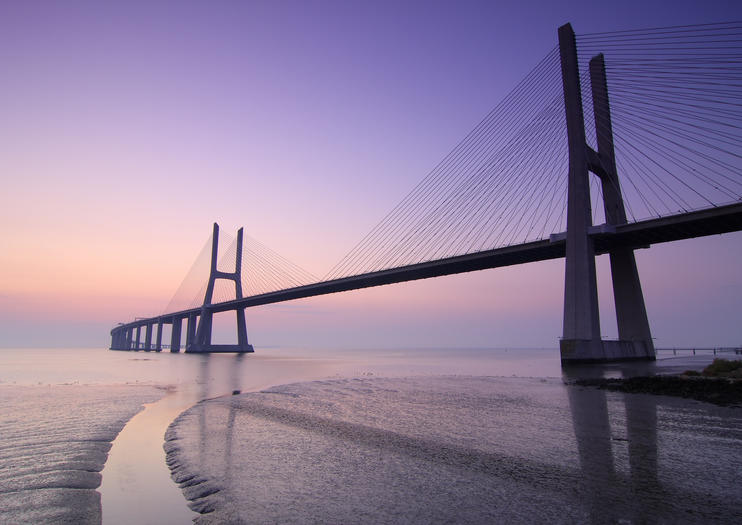

Portugal's larger rival Spain had been somewhat slower that their smaller neighbour to begin exploring the Atlantic, and it was not until late in the fifteenth century that Castilian sailors began to compete with their Iberian neighbours. In 1498 Vasco da Gama made good on this promise by reaching India. The crucial breakthrough was in 1487 when Bartolomeu Dias rounded the Cape of Good Hope and proved that access to the Indian Ocean was possible. In 1482 an expedition under Diogo Cão made contact with the Kingdom of Kongo. Progress continued as trading forts were built at Elmina and Sao Tome and Principe became the first sugar producing colony. Within two decades the barrier of the Sahara had been overcome and trade in gold and slaves began in with what is today Senegal. The Portuguese navigators made slow but steady progress, each year managing to push a few miles further south and in 1434 the obstacle of Cape Bojador was overcome. It was also hoped that south of the Sahara the states would be Christian and potential allies against the Muslims in the Maghreb.

It was the Portuguese hope that the Islamic nations could be bypassed by trading directly with West Africa by sea. These routes were controlled by the Muslim states of North Africa, long rivals to Portugal.

For centuries the only trade routes linking West Africa with the Mediterranean world were over the Sahara Desert. The main project of Henry the Navigator was exploration of the West Coast of Africa. Sailing out into the open Atlantic the Madeira Islands were discovered in 1419 and in 1427 the Azores were discovered and both became Portuguese colonies. The first great wave of expeditions was launched by Portugal under Prince Henry the Navigator. The Santa Maria at anchor by Andries van Eertvelt, painted c. These that were a combination of traditional European and Arab designs were the first ships that could leave the relatively passive Mediterranean and sail safely on the open Atlantic. The most important development was the invention of first the Carrack and then caravel in Iberia. The Age of Exploration was rooted in new technologies and ideas growing out of the Renaissance, these included advances in cartography, navigation, and shipbuilding. Among the most famous explorers of the period were Christopher Columbus, Vasco da Gama, Pedro Álvares Cabral, John Cabot, Juan Ponce de León, and Ferdinand Magellan. In the process, Europeans encountered peoples and mapped lands previously unknown to them. The so-called Age of Exploration was a period from the early 15th century and continuing into the early 17th century, during which European ships were traveled around the world to search for new trading routes and partners to feed burgeoning capitalism in Europe.


 0 kommentar(er)
0 kommentar(er)
